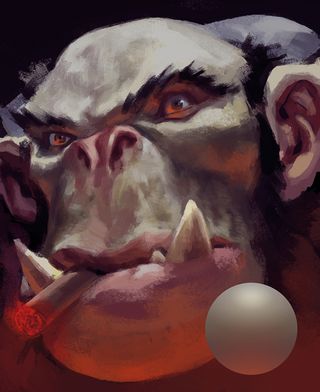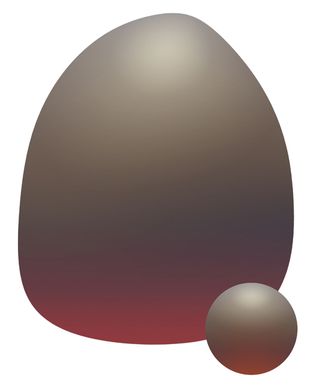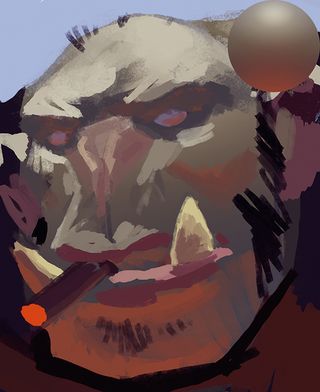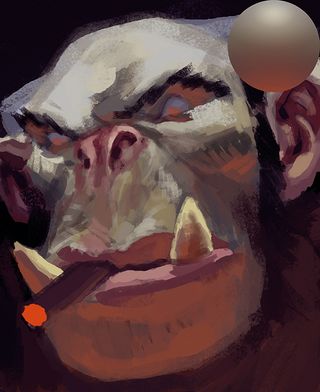Master drawing light with these 4 top tips
Using a light ball can provide a constant reminder of you light sources when painting.

You may have seen shaded balls being used by artists. Those balls help an artist to paint the light correctly in an image. Sometimes it's easy to forget where the light is coming from, especially on a large image with lots of elements, which requires you to zoom in to work.
Placing one of those balls next to your image means you'll always be reminded where the light is coming from – as long as you remember to refer to it, of course!
You can also use the ball as a palette for picking the right colours every time, or even treat it as a base to start your painting in some cases.
To create one of these balls, you just need to use a circular selection to create a circle, fill it with a base colour, and then add the lights with the Gradient tool or a brush if necessary.
You can (and should) also add any secondary light source, or paint the light on the ball according to the material you're going to paint.
01. Egg head!

Because I'm painting a portrait where the base shape of the head is similar to a ball, I'm going to use the ball as a base to the head of the character.
You can't always do this, of course, but if the painting subject is appropriate then it can be a good way to start. I just copy the ball and deform it using the Transform tool.
02. Trust your sources

Next, I apply different elements to the base. The light and shadow indicate the volume of elements, so it's important to get this right first time.
I start to add additional volumes to the base following a simple logic: elements facing upwards will reflect the upper light source, while those facing downwards won't.
03. Base illumination

I introduce more detail, colour variations, and additional volumes and information, while checking the ball to see if everything has the correct luminosity.
It's easy to forget the base illumination when you're caught up in the painting process. An image can have lots of cool detail, but if the lighting's wrong, everything fails.
04. Specular and diffuse
Some materials have specular reflection, like a mirror, while others are diffuse (a rock, say), but most of them have both. It's a good thing to reflect that on your reference ball.
This article originally appeared in ImagineFX issue 114.
Like this? Read these...
- Become a film concept artist with ImagineFX
- The B-movie art that's so bad it's good
- 3 top tips for illustrating personality

Thank you for reading 5 articles this month* Join now for unlimited access
Enjoy your first month for just £1 / $1 / €1
*Read 5 free articles per month without a subscription

Join now for unlimited access
Try first month for just £1 / $1 / €1
Get the Creative Bloq Newsletter
Daily design news, reviews, how-tos and more, as picked by the editors.
